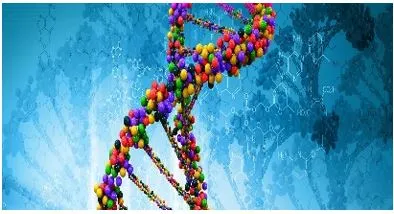

27th June 2024 (11 Topics)
Context
Recent advances in 'multi-omics' approaches have significantly enhanced the diagnosis and treatment of diseases like tuberculosis (TB) and cancers in India. This transformation has been driven by innovations in genomics and the rapid development of health infrastructure, particularly due to the COVID-19 pandemic.
What is Multi-omics?
- Multi-omicsis a powerful predictive and diagnostic approach, which helps to understand a complex, heterogeneous disease like cancer.
- It brings together multiple complex ‘omics’ datasets, which machine learning and AI can translate into meaningful biological insights.
Recent Significant Transformation (Multi-omics Integration)
- Genome India: This project has completed sequencing 10,000 genomes from 99 ethnic groups to develop a reference genome for Indian people, aiding in the creation of low-cost diagnostics and research tools.
- IndiGen: The Council for Scientific and Industrial Research (CSIR) sequenced genomes of 1,008 individuals to analyze genetic diseases, develop affordable screening methods, and optimize treatments.
- Multi-omics Approach: Combining genomics with other extensive datasets on proteins (proteomics), gene expression (transcriptomics), and chemical changes regulating gene expression (epigenomics) to tackle diseases more effectively.
Disease-specific Applications
- Tuberculosis: The Indian Tuberculosis Genomic Surveillance Consortium (InTGS) is sequencing 32,000 TB clinical strains to map genetic diversity, correlate mutations with drug resistance, and develop a sequence-based method for determining drug resistance. This effort includes collecting clinical samples and metadata, isolating genetic material, and conducting whole-genome sequencing.
- Cancers: The Indian Cancer Genome Consortium (ICGC-India) aims to identify population-specific genetic variations linked to cancer risk and treatment response. This initiative is part of a broader effort to facilitate personalized medicine and develop targeted therapies based on genetic profiling.
Rare Genetic Disorders and Antimicrobial Resistance
- Mission PRaGeD: This initiative focuses on raising awareness, performing genetic diagnoses, discovering new genes or variants, providing counseling, and developing new therapies for rare genetic diseases affecting children in India. It incorporates data from the IndiGen project and uses next-generation sequencing to manage rare diseases.
- Antimicrobial Resistance: Genomics and metagenomics help predict antibiotic resistance profiles without culturing bacteria, aiding in the judicious use of antibiotics. This is particularly valuable for slow-growing pathogens like the tuberculosis bacterium, allowing clinicians to make informed treatment decisions.
Impact and Future Directions
- Human Dignity and Quality of Life: Multi-omics approaches have the potential to break cycles of poverty and exploitation associated with disease, improving health outcomes and enhancing human dignity.
- AI and ML Integration: Artificial intelligence and machine learning are essential for managing large genomic datasets, predicting disease risk, and developing diagnostic and therapeutic tools. These technologies help analyze extensive data sets, identify disease-causing variants, and develop treatment strategies.
- Comprehensive Healthcare: Emphasizes the need for a holistic approach, addressing root causes, strengthening legal frameworks, enhancing coordination between health and research entities, and investing in health infrastructure to support the expansion and integration of multi-omics technologies.

Fact Box: What is the human genome?
|
Mains Practice Question
Q: “Discuss how the integration of multi-omics approaches is revolutionizing the diagnosis and treatment of diseases like tuberculosis and cancers in India. What are the challenges and future prospects of these innovations?”
More Articles



